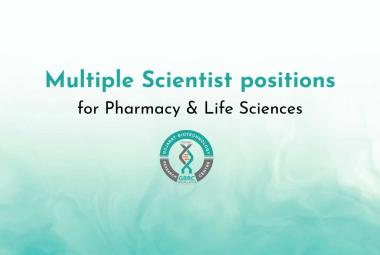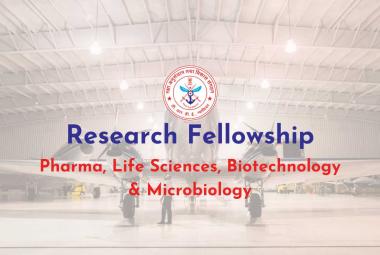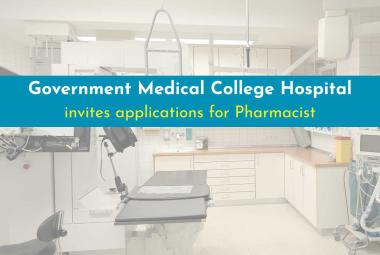{ DOWNLOAD AS PDF }
 ABOUT AUTHORS:
ABOUT AUTHORS:
Vishwanadham Yerragunta*1, 2, Pratima patil2, S. Srujana2, Roopa Devi2, R.Gayathri1, Srujana1, Aary Divya2
1Department of Pharmaceutical Chemistry, Sitha Institute of Pharmaceutical Sciences, Hyderabad, Andhra Pradesh.
2Department of Pharmaceutical Chemistry, Vishnu Institute of Pharmaceutical Education & Research, Narsapur, Medak, Andhra Pradesh.
vishwanadham.y@gmail.com
ABSTRACT
Benzimidazole is a heterocyclic aromatic organic compound. This bicyclic compound consists of the fusion of benzene and imidazole. Heterocyclic compounds are occupied prominent place among various class of aromatic organic compounds. Benzimidazole are having a variety of therapeutic uses including antitumor, antifungal, antiparasitic, analgesics, antiviral, antihistamine, as well as use in cardiovascular disease, neurology, endocrinology, and ophthalmology.
[adsense:336x280:8701650588]
REFERENCE ID: PHARMATUTOR-ART-2116
|
PharmaTutor (ISSN: 2347 - 7881) Volume 2, Issue 3 Received On: 13/01/2014; Accepted On: 23/01/2014; Published On: 05/03/2014 How to cite this article: V Yerragunta, P Patil, S Srujana, R Devi, R Gayathri, Srujana, D Aary,Benzimidazole Derivatives and Its Biological Importance: A Review, PharmaTutor, 2014, 2(3), 109-113 |
INTRODUCTION
Benzimidazole is a heterocyclic aromatic organic compound. Benzimidazole moieties are a very important class of heterocyclic compounds that have many applications in pharmaceutical chemistry. This compound is bicyclic in nature which consists of the fusion of benzene and imidazole. Nowadays is a moiety of choice which possesses many pharmacological properties. The most prominent benzimidazole compound in nature is N-ribosyl-dimethylbenzimidazole, which serves as an axial ligand for cobalt in vitamin B12.[1]

In 1991 benzimidazole derivatives were synthesized by derivatization at N-H of benzimidazole by electron donating group and substitution with long chain of propyl, acetamido, thio, thiazole-amino, tetramethyl piperidine on pyridine resulting in good antiulcer activity [2,3].
Based on their broad biological functions, they are used in clinical medicine as anti-ulcer, anti-tumor and anti-viral agents [4].
Nowadays Infectious microbial diseases are causing problems world-wide, because of resistance to number of antimicrobial agents (β-lactam antibiotics, macrolides, quinolones, and vancomycin). A variety of clinically significant species of microorganisms has become an important health problem globally. One way to fight with this challenge is the appropriate usage of the available marketed antibiotics the other is the development of novel anti-microbial agents[5]. Hence, there will always be a vital need to discover new chemotherapeutic agents to overcome the emergence of resistance and ideally shorten the duration of therapy. Due to the structural similarity to purine, antibacterial ability of benzimidazoles are explained by their competition with purines resulting in inhibition of the synthesis of bacterial nucleic acids and proteins [6,7].
SYNTHESIS OF BENZIMIDAZOLE
Several synthetic methodologies are available for the synthesis of benzimidazoles. Generally, the condensation of o-phenylene diamine with carboxylic acids and their nitrile, imidates and orthoester[8] derivatives have been widely used for benzimidazole synthesis.
Direct condensation of o-aryl diamine with aldehyde is not a good synthetic route for these molecules as it yields a complex mixture of 1,2-disubstituted benzimidazole and bis dihydrobenzi-midazole as side products[9]. But the use of ransition metal catalysts namely copper (II) acetate[10] and lead tetra-acetate in these reactions afforded better results. Ruthenium[11], palladium[12]and rhodium[13] catalysts have also been used.
Benzimidazole is commercially available. The usual synthesis involves condensation of o-phenylenediamine with formic acid,[14]or the equivalent trimethyl orthoformate:
C6H4(NH2)2 + HC(OCH3)3 → C6H4N(NH)CH + 3 CH3OH
REVIEW OF LITERATURE:
1.Khan Farhan. R., Asnani A. J.et.al., Synthesis and Antiulcer, Anti-secretory Activity of Some New substituted 2-(Pyrimidinylsulfinyl) Benzamidazoles Derivatives [15].

2.Canan KUS¸ Synthesis of New Substituted 6-(morpholin-4-yl)-1H-Benzimidazole Derivatives [16].

R1=F,Cl,OCH3, di-OCH3
NOW YOU CAN ALSO PUBLISH YOUR ARTICLE ONLINE.
SUBMIT YOUR ARTICLE/PROJECT AT articles@pharmatutor.org
Subscribe to Pharmatutor Alerts by Email
FIND OUT MORE ARTICLES AT OUR DATABASE
3. KUSCanan, Synthesis of Some New Benzimidazole Carbamate Derivatives for Evaluation of Antifungal Activity[17].

R= Cl , 4-morpholinyl, 1-pyrrolidinyl, 3-methylpiperidin-1-yl, (pyridin-3-ylmethyl)-amino.
4 Hasan KUC¸UKBAY, Ulku YILMAZ , Nihat S¸ET.AL., Synthesis and antimicrobial activities of some bridgedbis-benzimidazole derivatives [18].
5.Michile tonilli et.al., synthesized antiviral activity of Benzimidazole derivatives. II antiviral activity of 2-phenylbenzimidazole derivatives [19].

Heteroaryl = furan-3-yl; pyridin-2-yl R’ = OH, NH-R
6. B. Guruswamy* and R. Arul et.al., have synthesized A micro-wave assisted synthesis of benzimidazole derivatives using solid support [20].

R= H, Fluoro, Chloro, Bromo, Trifluoro methyl, Cyano, Methoxy.
7. DT Nannapaneni, Atyam VSSS Gupta, MI Reddy, and Raidu Ch Sarva et.al., Synthesis, Characterization, and Biological Evaluation of Benzimidazole Derivatives as Potential Anxiolytics [21].

8.Balram Soni1, Mahendra Singh Ranawa et.al., synthesis and in vitro antitumor activity of benzimidazole derivatives [22].

|
|
R |
R1 |
|
1 2 3 4 5 6 |
H H H H H -2NO2 |
H -2NO2 -3NO2 -2Cl -4Cl -2NO2 |
|
7 8 9 10 11 |
-2NO2 -3NO2 -3NO2 -2Cl -2Cl |
-3NO2 -2NO2 -3NO2 -2NO2 -3NO2 |
Pharmacological Activities of Benzimidazole Derivatives
Drugs in this class differ from all other in that they are designed to inhibit/kill the infecting microorganism. Treatment of systemic infections with specific drugs that selectively suppress the infecting micro-organism without significantly affecting the host. From this they are referred as bacteriostatic and bactericidal respectively
1.Anthelmintic
These are the drugs that either killor expel infesting helminthes. Some drugs containing benzimidazole nucleus are Thibendazole, Mebendazole, and Albendazole etc.

Mebendazole
2.Anti-ulcer drugs:
These are the drugs which inhibits both basal and stimulated gastric acid secretion.Some drugs containing benzimidazole nucleus are Pantoprazole, Rabeprazole, Lansoprazole, Omeprazole etc

Omeprazole
3.Anti-psychotic agents
Inpsychosis thinking of patient becomes illogical, bizarre and loosely organized. Patient has difficulty in understanding reality and their own conditions.Some drugs containing benzimidazole nucleus are droperidol, pimozide, and benperidol

Droperidol
NOW YOU CAN ALSO PUBLISH YOUR ARTICLE ONLINE.
SUBMIT YOUR ARTICLE/PROJECT AT articles@pharmatutor.org
Subscribe to Pharmatutor Alerts by Email
FIND OUT MORE ARTICLES AT OUR DATABASE
4.Anti protozoal agents
These are the drugs which are used to treat the amoebiasis caused by E.histolytica. They exert cytotoxicity by damaging DNA and result in DNA helix destabilization strand breakage. The antiprotozoal drugs containing imidazole nucleus are metronidazole, benznidazole.

Metronidazole
5. Antifungal
These are the drugs used for superficial and deep fungal infections. Fungal infections are termed mycoses and in divided in to superficial infections (skin, nails, and scalp) and systemic infections (deeper tissues and organs) some conditions are blastomycosis, histoplasmosis, candidiasis, coccibiomycosis etc.
Most common antifungal agents containing imidazole nucleus are Clotriamazole,Miconazole, Ketoconazole

Miconazole
OTHER DRUGS
Pimobendan

CONCLUSION
The benzimidazole ring is an important pharmacophore in drug discovery. Some substituted benzimidazole derivate drugs are more potent activity. The synthesis of benzimidazole derivatives is a privileged scaffold, having a variety of therapeutic uses including antitumor, antifungal, antiparasitic, analgesics, antiviral, antihistamine, as well as use in cardiovascular disease, neurology, endocrinology.
REFERENCES
1.Barker HA, Smyth RD, Weissbach H, Toohey JI, Ladd JN and Volcani BE. Isolation and properties of crystalline cobamide coenzymes containing Benzimidazole or 5,6- Dimethylbenzimidazole. Journal of Biological Chemistry. 1960;235(2):480- 488.
2.Grassi A, Ippen J, Bruno M, Thomas G and Bay P. thiazolylamino benzimidazole derivative with gastroprotective properties in the rat. Eur J Pharmacol.1991;195(2):251-9.
3. Ozkay Y, Tunali Y, Karaca H. and Isikdag I. Antimicrobial activity and a SAR study of some novel benzimidazole derivatives bearing hydrazones moiety. European Journal of Medicinal Chemistry. 2010;45(8):3293-3298.
4.Preston P N, Stevens M F G & Tennant G, Benzimidazoles and Congeneric Tricyclic Compounds, Part 2, (John iley and Sons New York) 1980;
5.Metwally KA, Abdel-Aziz LM, Lashine el-SM, Husseiny MI and Badawy RH. Hydrazones of 2-aryl- -4- carboxylic acid hydrazides: synthesis and preliminary evaluation as antimicrobial agents. Bioorg Med Chem. 2006;14(24): 8675-82.
6. Spasov A, Yozhitsa L, Bugaeva I and Anisimova VA. Benzimidazole derivatives: Spectrum of pharmacological activity and toxicological properties. Pharmaceutical Chemistry Journal. 33;5:232-243.
7.Arjmand F, Mohani B and Ahmad S. Synthesis, antibacterial, antifungal activity and interaction of CT-DNA with a new benzimidazole derived Cu (II) complex. Eur J Med Chem. 2005;40(11):1103-1110.
8.Dudd L M, Venardou E, Garcia-Verdugo E, Licence P, Blake A J, Wilson C & Poliakoff M, Green Chem, 5, 2003, 187.
9.Nagata K, Itoh T, Ishikawa H & Ohsawa A, Heterocycles,61, 2003, 93.
10.Curini M, Epifano F, Montanari F, Rosati O & Taccone S, Synlett, 18, 2004, 32.
11.Chakrabarty M, Karmakar S, Ajanta M, Arima S & Harigaya Y, Heterocycles,68, 2006, 967.
12.Aliyan H, Fazaeli R, Fazaeli N, Mssah A R, Naghash H J, Alizadeh M & Emami G, Heteroatom Chem, 20, 2009, 202.
13.Zhang Z H, Yin L & Wang Y M, Catal Commun,8, 2007, 1126.
14.E. C. Wagner and W. H. Millett (1943), "Benzimidazole", Org. Synth.; Coll. Vol. 2: 65.
15.Khan** Farhan. R., Asnani* A. J.et.al ,International Journal of Research in Pharmaceutical and Biomedical Sciences. 2011, Vol. 2 (2)
16.Canan KUS .,Turk J Chem 26 (2002) , 559 – 564.
17.Canan KUS .,Turk J Chem 27 (2003) , 35 – 39.
18. Hasan K¨UC¸¨UKBAY,∗, ¨Ulku¨YILMAZ., Turk J Chem 35 (2011), 561 – 571.
19.Michile tonilli et.al.Bio-organic & medicinal chemistry 18 (2010) 2937-2953.
20.B. Guruswamy* and R. Arul., Der Pharma Chemica, 2011, 3 (6):483-486
21.DT Nannapaneni, Atyam VSSS Gupta,1 MI Reddy, and Raidu Ch Sarva1 J Young Pharm. 2010 Jul-Sep; 2(3): 273–279.
22.Balram Soni1*, Mahendra Singh Ranawat1, Anil Bhandari2 and Rambabu Sharma ., Int. J. Drug Res. Tech. 2012, Vol. 2 (7), 479-485.
NOW YOU CAN ALSO PUBLISH YOUR ARTICLE ONLINE.
SUBMIT YOUR ARTICLE/PROJECT AT articles@pharmatutor.org
Subscribe to Pharmatutor Alerts by Email
FIND OUT MORE ARTICLES AT OUR DATABASE









